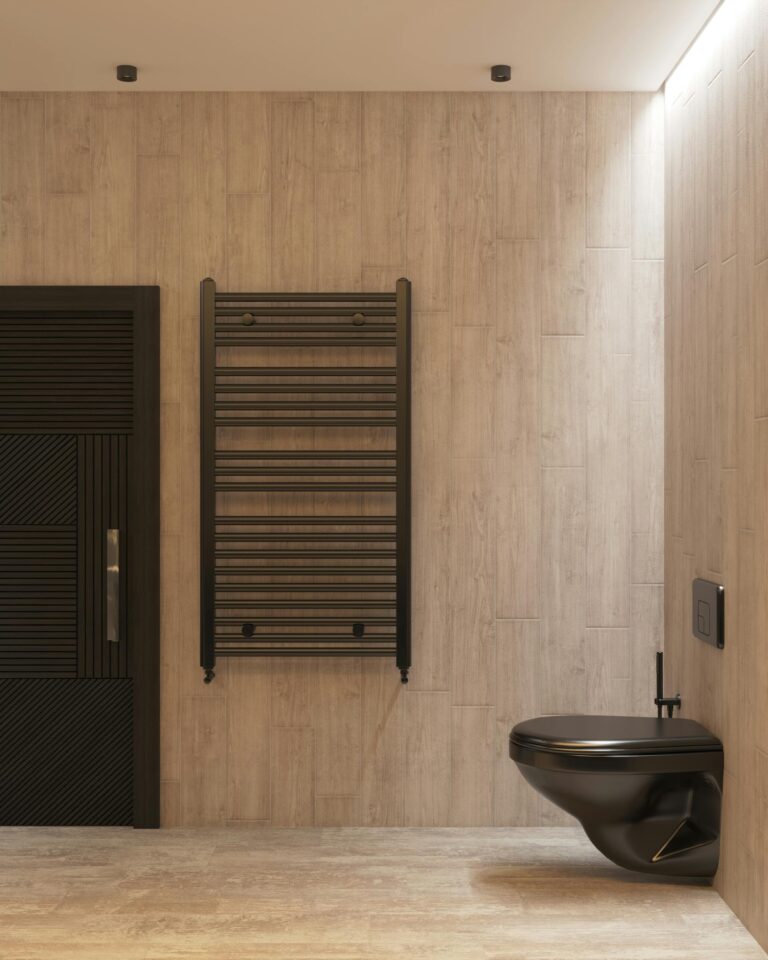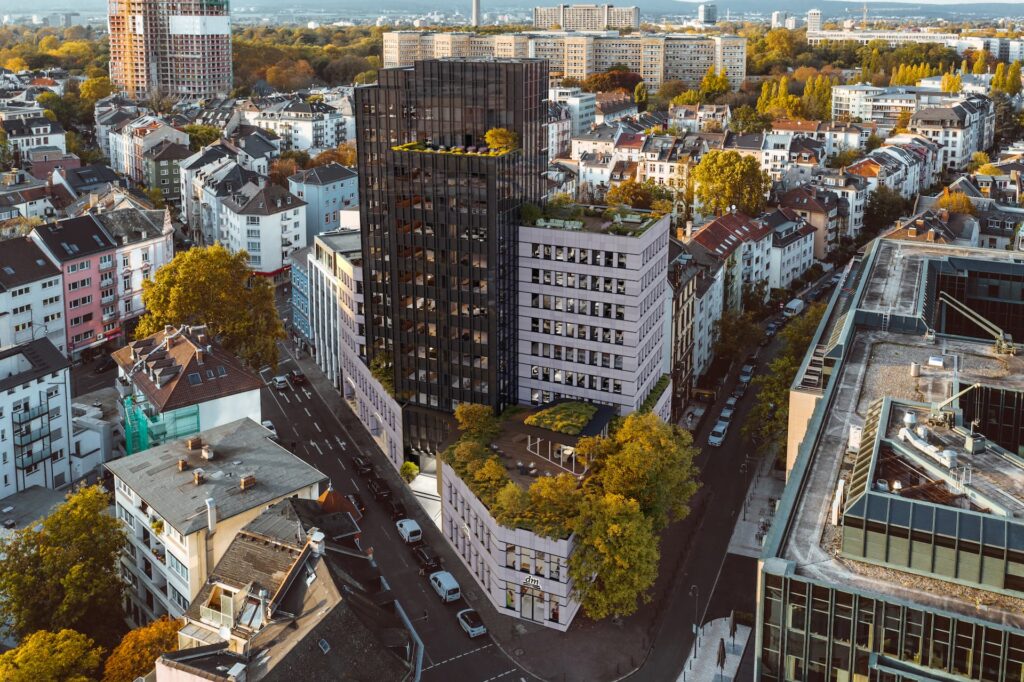Before construction starts, commercial architectural renderings are detailed images of commercial buildings that are created to show what a project will look like. These renderings help stakeholders, architects, and clients to see the final product clearly, which bridges the gap between the idea and the actual building.
They are a crucial set for marketing the project, communicating ideas, and making decisions throughout the architectural process.
In this complete guide, you will explore the process of creating them, different types of commercial architectural renderings, the benefits they offer, and the software and tools that are involved in creating beautiful images.
Whether you are a real estate developer, an architect, or just a person interested in this field, this article will offer you very useful insights into architectural renderings. You will find valuable information here.
Ready to delve into the article? Let’s have a look at how commercial architectural renderings can transform your precious projects and bring your visions to life!
Types of Commercial Architectural Renderings
Here are the five common types of commercial architectural renderings: exterior renderings, interior renderings, aerial renderings, 3D floor plans, and virtual tours.
Exterior Renderings
Exterior renderings show how the building’s outside will look like, as it highlights the building’s appearance, lighting, landscaping, and the areas surrounding it. It helps in providing a clear picture of the finished product to its investors, stakeholders, and clients that helps in visualizing and marketing the project.
It is especially used in real estate development and urban planning by illustrating how a new building will incorporate its surroundings. To create a realistic image, exterior renderings can be highly detailed, incorporating elements such as reflections, shadows, and weather effects.
Interior Renderings
In interior renderings, the main focus is on the layout, design, and materials of indoor spaces like offices, lobbies, and retail areas. These renderings help clients visualize how the interior will look and feel; it includes textures, lighting, furniture placement, and color schemes.
Ensuring that the final design meets expectations, they are invaluable for architects and designers who need to communicate their vision to clients. Additionally, interior renderings allow for experimenting with design options and also making adjustments before construction. It saves time and resources.
Aerial Renderings
Aerial renderings show the building and its surroundings all at once which gives a top-down view of a project. They are especially beneficial for big commercial projects like office complexes or shopping malls. You can easily understand how the layout and space work together on the site with these renderings.
Making them ideal for presentation to stakeholders, aerial renderings also show how the project interacts with nearby infrastructure, such as public transportation and roads.
3D Floor Plans
3D floor plans offer a more immersive experience than traditional 2D plans, as it’s an overhead representation of a building’s layout. These renderings are especially useful in commercial real estate, where understanding the functionality and flow of a space is important.
To provide a comprehensive project for understanding, 3D floor plans can be combined with other renderings such as exterior and interior views.
Process of Creating Commercial Architectural Renderings
It is a multi-step process to represent your concepts as a detailed visual representation by creating commercial architectural renderings. You need to go through several key stages during the process to accurately represent your project in the final rendering. Following are the steps you need to follow.
1. Initial Consultation
The first step to an accurate rendering is transparent consultation with your architect, designer, or developer. This will give them a clear understanding of your project’s needs, goals, and vision.
You will provide details about your purpose, preferences, and specific features you want in your result. Your architect or designer will outline the rendering process using the details provided during the consultation, so the final rendering satisfies your expectations.
2. Site Analysis and Research
The next step after consultation with your architect is to thoroughly analyze your site’s details. It includes inspecting the location, surroundings, topography, and any existing structures on your site. Other factors, such as environmental impacts, local climate, and lighting conditions of your site, are also considered during this analysis.
This step will result in a rendering that accurately reflects the physical context in which your building is being constructed. The site analysis will help your designer add realistic elements resembling your site in the final rendering to make it more intriguing.
3. Concept Development
The next step is concept development, in which your designer creates sketches and models of different designs and layouts for your project. These designs are further used to experiment with building shapes, materials, and aesthetics to find the best option for your rendering.
You collaborate with your designer during this process by giving feedback to refine the concept according to your needs. It will help your designer create a clear design direction as a foundation for the final rendering.
4. 3D Modeling
Your designer uses the finalized concept to create a digital model of your building using specialized software during 3D modeling. This 3D model represents different architectural elements of your building, such as walls, windows, doors, and roofs, from multiple angles.
Your designer uses this model as a framework to experiment with different perspectives and make adjustments to the final rendering according to your needs. This model also helps in transparently communicating your design with stakeholders and clients.
Software and Tools Used in Architectural Renderings
It is important to incorporate advanced software and tools to create commercial architectural renderings that convert your ideas into detailed visual representations. Each tool used in your rendering process has a specific purpose, ranging from modeling and texturing to lighting and post-production.
Following are the five key software programs commonly used by designers to create your architectural renderings.
Autodesk 3ds Max
Autodesk 3ds Max is one of the most powerful and commonly used tools during architectural rendering. 3ds Max comes with strong modeling capabilities, allowing designers to create highly detailed 3D models of your buildings and landscapes.
This software contains all the necessary features needed for your realistic renderings including advanced lighting, shading, and texturing options. Moreover, 3ds Max extends its functionality by supporting a variety of plugins such as V-ray. This compatibility of this softwares makes it a versatile option for both your exterior and interior renderings.
SketchUp
SketchUp is another widely used software that is renowned because of its human-friendly and initiative interface. It is a prime option to quickly create conceptual models and detailed architectural designs for your project.
SketchUp serves you as a valuable tool during the designing process because of its integrity with other softwares such as V-ray for rendering. SketchUp comes with a library of pre-built models and digital components.
It allows your designer to quickly represent complex scenes without modeling each detail from scratch. These features make SketchUp ideal for both beginner and advanced designers to create high-quality renderings of your project.
V-Ray
V-ray is mostly used in combination with 3ds Max, SketchUp, and other 3D modeling software to render high-quality output of your project. V-ray allows the creation of lifelike lighting, shadows, and textures in your renderings because of its photorealistic output.
It simulates the interaction of light with materials using advanced algorithms to give you a highly realistic image. The expanded compatibility and precision of V-ray allow your designers to achieve a high level of realism in your renderings.
Blender
This 3D modeling and rendering program is popular because it offers you a set of extensive features and no-cost accessibility. The capabilities of Blender in creating your architectural renderings are as impressive as in other industries including animation and visual effects.
Your designer can create highly detailed and realistic renderings for you using tools for modeling, texturing, lighting, and rendering provided in Blender. Professionals and hobbyists can easily rely on it because of its active community and continuous updates.
Benefits of Using Commercial Architectural Renderings
You can gain numerous benefits from commercial architectural renderings throughout the designing and construction process of your project. These renderings allow you to bring your architectural concepts into the real world.
Additionally, it helps you to have enhance communication with stakeholders and designers, in marketing efforts, and in the overall efficiency of your project. These are the four major benefits you can get from using commercial architectural renderings.
Visualization of Concepts
A primary benefit of using architectural renderings is the immersion of your complex design concepts. These renderings provide a realistic preview of the looks of your building in the physical space. It allows stakeholders and clients to understand your concept before its actual construction is started.
You can make the right decisions about elements such as materials, colors, and layouts using visual representations. This will fill up the gap between your idea and its physical existence to provide a better understanding of the final result.
Improved Communication
The communication of your project between architects, designers, clients, and other stakeholders can be improved using architectural renderings. It can be difficult to interpret the design using traditional blueprints and drawings for beginners. This may result in misunderstanding and false assumptions about your project.
But visual representation of your project through renderings is easy for everyone to understand. This will improve collaboration between professionals and discussions, resulting in quick removal of potential issues. This clear collaboration ensures that your projects are completed smoothly without any problems.
Marketing and Presentation
High-quality architectural renderings allow you to represent and market your project more effectively. It allows you to attract more investors, buyers, and tenants by using it in promotional materials, websites, brochures, and presentations. These renderings generate the interest of others by highlighting the features and potential of your project.
High-quality renderings can help real estate developers and commercial property owners secure pre-sales and agreements before the actual compilation of the project. Renderings serve as a great marketing strategy as they help you represent the value and appeal of a project.
Error Reduction
You can easily detect and eliminate potential issues in your project before its construction using architectural renderings. Architects and designers can better understand incompatibilities, flaws, and practical issues in renderings than in traditional drawings.
It allows you to detect problems and make adjustments in the early stages to avoid costly changes and delays in the construction process. It results in a successful output of your project when you can detect and fix problems before they cause problems with the process.
Challenges in Creating Architectural Renderings
Architectural renderings are now crucial in industries of design and construction as you can get a detailed presentation of a project before its physical existence. However, it also comes with challenges you need to deal with.
Designers and architects need to deal with such problems rendering results in satisfying all of their requirements. The following are four major challenges you can face during the rendering process.
Balancing Realism and Creativity
A major challenge when creating an architectural rendering is maintaining a balance between your creativity and realism. The main purpose of rendering is to provide the actual presentation of your project’s true materials, lighting, environmental conditions, and final building in real space.
However, you also need to make it appealing and engaging enough to attract viewers and make your project stand out. Your designer must maintain a balance between these two factors to make a rendering that creatively represents a realistic vision of your final project. Meanwhile, it also targets and satisfies your viewer’s imagination.
Time Constraints
Architectural rendering is a time-consuming process that demands an investment of hours of hard work to result in rendering that meets your expected quality. However, designers face congested timelines, especially in commercial projects.
This pressure on the designer to maintain quality in a short time frame can lead to a loss of quality in the final rendering you get. This problem can be dealt with by prioritizing tasks, managing given, and using rendering techniques so you get your desired results without sacrificing quality.
Client Expectations
Another major challenge faced by designers during the rendering process is meeting clients’ expectations in the final result. Clients’ vision sometimes does not align with your practical and aesthetic considerations.
Moreover, clients are sometimes unable to communicate their requirements properly with you. This also results in unsatisfying output and revisions in the rendering.
You must communicate with your client with numerous drafts throughout the process for feedback. It requires patience and collaboration to maintain a balance between meeting your client’s expectations and maintaining the quality of rendering.
Technical Limitations
There still are some technical limitations after advancements in rendering software and hardware. It is a resource-intensive task to render highly detailed complex scenes that require you to have powerful computers and specialized softwares.
It is challenging for you to make a high level of realism while maintaining accurate lighting, reflections, and textures even when using advanced softwares. You must optimize your workflow within these technical limitations and make the most of the available resources without compromising the quality of the final rendering.
Trends in Commercial Architectural Renderings
Technological advances and shifting client needs are changing by how architects and designers create and show commercial architecture renderings. Here are the five key trends that are shaping these renderings right now.
Augmented Reality (AR)
Augmented Reality (AR) is becoming very popular in architectural renderings that offers an immersive way to interact with designs. By using smartphones, AR glasses, or tablets, AR allows users to overlay digital models of buildings onto real-world environments.
AR technology lets users explore the design in real-time by viewing different angles and lighting that enhance architectural visualization. This technology helps stakeholders and clients better understand how a project fits with its surroundings.
Photorealistic Renderings
In recent years, the demand for photorealistic renderings has increased. The main aim of these renderings is to provide realistic images that seem like photographs. Advanced techniques and software like ray tracing, global illumination, and physically-based materials are the best tools for realistic architectural images.
These renderings are used and helpful for presentation and marketing as they show all the details. This trend will likely keep growing as technology advances and clients demand better visualizations.
Sustainability in Renderings
As sustainability becomes a key focus in architecture, architects now include solar panels, green roofs, and energy-efficient materials in their renderings. To highlight their commitment to eco-friendly practices, architects also show these sustainable design elements.
Renderings that focus on sustainability show the environmental benefits of a project and attract clients and stakeholders who care about eco-friendly practices. This trend matches the wider push towards sustainable architecture and will likely increase as environmental concerns shape design choices.
Animation and Flythroughs
Animation and flythroughs are becoming standard components of architectural presentations. These dynamic visualizations allow viewers to experience a virtual tour of a building or space, moving through different areas as if they were physically present.
Animation and flythroughs are now common in architectural presentations. They let viewers take a virtual tour of a building or space, moving through various areas as if they were actually there.
Flythroughs can showcase the flow and functionality of a design, providing a more comprehensive understanding than static images alone. They are particularly effective in large-scale commercial projects, where understanding the layout and connectivity of spaces is crucial.
As video content continues to dominate digital media, the use of animations and flythroughs in architectural renderings is expected to increase.
Conclusion
Commercial architectural renderings are the important tools that turn ideas into visual reality. As it provides clear images that help on every stage of the construction and design process.
These renderings minimize mistakes, improve communication, boost marketing efforts, and help to manage costs effectively. By visualizing the project in detail, renderings make it easier to bring architectural concepts to life.
To create more engaging and impressive visualizations, architects and designers can use the latest technologies like augmented reality, photorealistic renderings, and real-time rendering.
If you want to see how commercial architectural renderings can help you improve your projects, produce amazing presentations, and make communication smoother, you need to start using these tools in your design process. Begin turning your architectural ideas into reality today!
FAQs
Q. What are commercial architectural renderings?
Commercial architectural renderings are the visual representations of spaces or buildings that are used to showcase the design before construction which helps clients and stakeholders to visualize the final product.
Q. How long does it take to create an architectural rendering?
To create an architectural rendering, the time required varies on factors such as the complexity of the project. However, mostly, it takes anywhere from a few days to several weeks to produce a high-quality architectural rendering.
Q. Why are architectural renderings important in commercial real estate?
Architectural renderings are important in commercial real estate because before construction starts, they help in visualizing the project, securing approvals, attracting investors, and marketing properties effectively.







